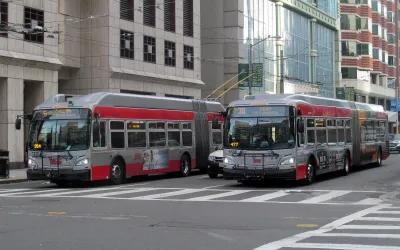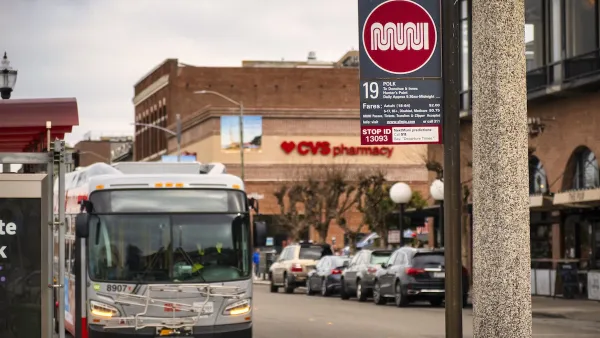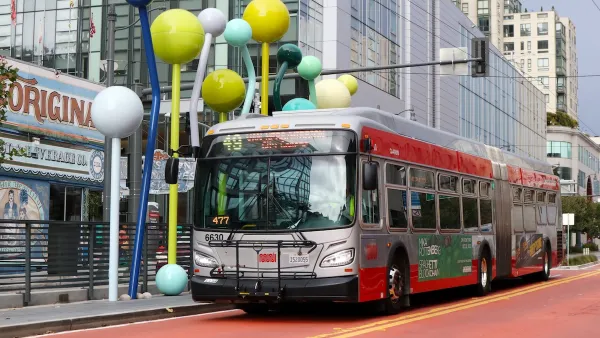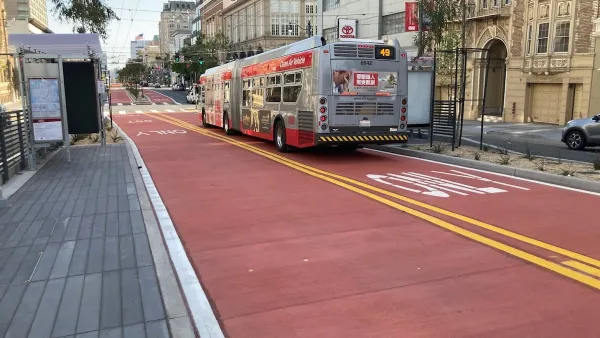The SFMTA is considering a "high-access network" that would let people reach more destinations and increase frequency on some Muni lines.

As part of Jarrett Walker + Associates' work with the San Francisco Municipal Transportation Agency (SFMTA) on its post-pandemic bus service, Jarrett Walker asks, "[w]hen a transit agency comes back from the COVID-19 crisis, should it aim to put service back the way it was, or try to put back something better?"
While Muni has historically served workers commuting into downtown San Francisco, "the pandemic accelerated ongoing trends that have shifted travel patterns away from a single focus on downtown and towards many locations across the city." This summer, SFMTA will present three options to the public to collect feedback and "help the SFMTA Board determine the pattern of Muni service to be implemented in early 2022." The options are:
- Return the Familiar Network
- Build a High-Access Network
- Develop a Hybrid Network, balancing the best features of the first two.
"The High-Access approach would shift some patterns of service to expand people’s ability to get to more destinations sooner," shifting the focus to potentially needed trips that don't exist yet. Because "[b]etter access can mean more opportunities in your life," Walker writes, "[a] high-access network tries to give people as many options as possible."
Regardless of public feedback, "the SFMTA faces severe resource constraints" that will make it difficult to restore pre-pandemic service levels. "It still faces a labor shortage and has lost much of its income from fares and parking revenues, not to mention the structural deficit that existed even before the pandemic." To Walker, "it makes sense to offer only a level of Muni service that the SFMTA is sure they can sustain, at least until they find new resources to replace funds that have eroded over the last decade and fallen dramatically during the COVID-19 pandemic."
FULL STORY: San Francisco: Go Forward by Going Back?

Analysis: Cybertruck Fatality Rate Far Exceeds That of Ford Pinto
The Tesla Cybertruck was recalled seven times last year.

National Parks Layoffs Will Cause Communities to Lose Billions
Thousands of essential park workers were laid off this week, just before the busy spring break season.

Retro-silient?: America’s First “Eco-burb,” The Woodlands Turns 50
A master-planned community north of Houston offers lessons on green infrastructure and resilient design, but falls short of its founder’s lofty affordability and walkability goals.

Test News Post 1
This is a summary

Analysis: Cybertruck Fatality Rate Far Exceeds That of Ford Pinto
The Tesla Cybertruck was recalled seven times last year.

Test News Headline 46
Test for the image on the front page.
Urban Design for Planners 1: Software Tools
This six-course series explores essential urban design concepts using open source software and equips planners with the tools they need to participate fully in the urban design process.
Planning for Universal Design
Learn the tools for implementing Universal Design in planning regulations.
EMC Planning Group, Inc.
Planetizen
Planetizen
Mpact (formerly Rail~Volution)
Great Falls Development Authority, Inc.
HUDs Office of Policy Development and Research
NYU Wagner Graduate School of Public Service




























